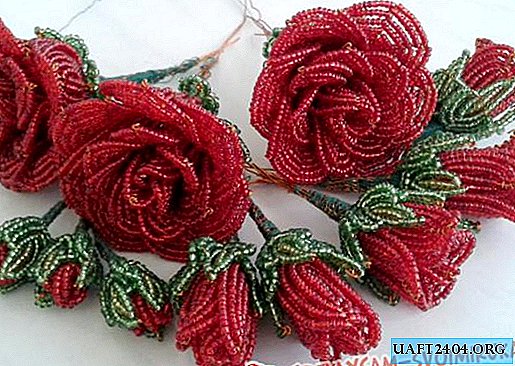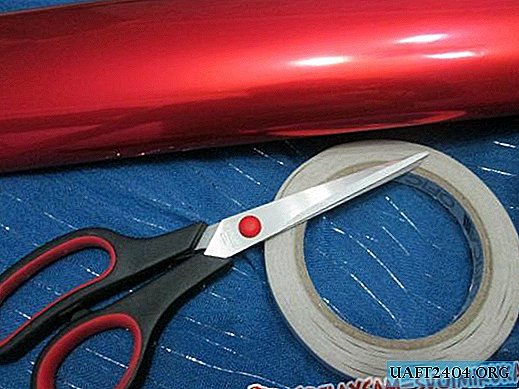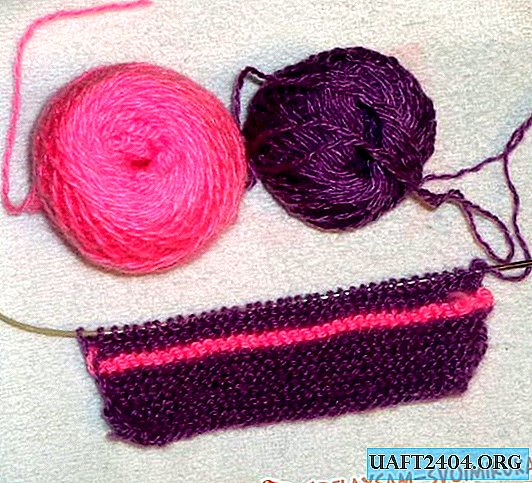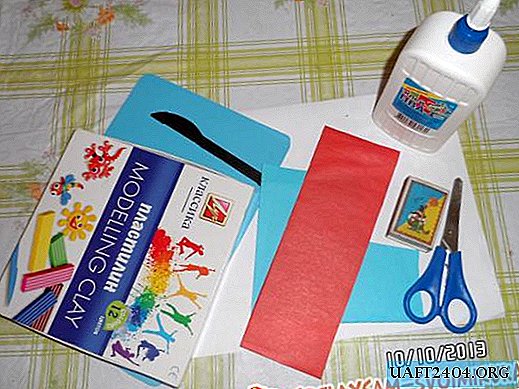Share
Pin
Tweet
Send
Share
Send
What is necessary?
Making a love tree with blooming roses is not as difficult as it seems at first glance. A minimum of skills in the art of beadwork and the necessary equipment are enough, namely:
- beads (light and dark green, red);
- wire of different diameters (depends on the size of the beads and the thickness of the tree trunk);
- thin threads of green color;
- PVA glue;
- cotton wool;
- disk;
- a suitable wedding figurine;
- pliers.
Weaving roses
The French beadwork technique used to create these beautiful roses is pretty simple. The central and extreme petals of the flower are woven in different ways, but the essence of their implementation is the same - the circular braiding of the bead row. Let's consider each stage in more detail.

Weaving three blossoming rose flowers
1. Weaving of the central petals.
To weave the central rose petals, two pieces of wire are required, the diameter of which should be less than the hole of red beads. To save wire, a large amount of red beads is strung directly on a skein.

A piece of wire 5-10 cm long is attached to the end of the wire with the bead row, as shown in the photo - this is the axis around which the bead row will be braided.

Beads of a certain number are strung on the axis - the more there are, the larger the petal will be. At an angle of 90 degrees, a wire with a bead row in one revolution is fixed on the opposite side of the connection to the axis. The wire must be brought over the axis - this moment is important, since the wire should be less noticeable on the front side of the product.

Next, the wire with the bead row is fixed in one revolution at the base of the connection with the axial wire. The twist angle is 90 degrees.

Thus, four rows of braiding axis are made. Due to the fact that the connection angle is 90 degrees, the shape of the petal will turn round.







The axis wire is cut and bent to the wrong side.

You need to make nine petals with six beads on the axis, and twenty one petal with eight beads on the axis.
2. Weaving the extreme petals
The extreme rose petals are woven in the same technique as the central ones, with the only difference being that, to obtain wider petals, two axes are used.



The wire also winds over the axes when turning at an angle of 90 degrees along the edges of the axes.


Axes are braided in seven rows. With each row between the axes, the number of beads increases in the following sequence: 1-2-4-6-8-10-12.










You need to make eighteen petals with a double axis.
3. Weaving sepals
Rose sepals core is woven using French technique.
It is necessary to braid a core of eight light green beads with one row of dark green beads.
When fixing, the wire is brought over the axis. The twist angle should be sharp.



The second row consists of half the amount of the first row. A wire is led between the beads and a double row of dark beads is pulled to the middle of the extreme row.


At the base of the sepal, it is necessary to draw the wire between the extreme rows and to attach a similar double row on the other side.



For rosebuds, five sepals per flower are required.
4. Assembling a rose flower
As described above, for one flower it is necessary:
- three small petals with one axis;
- seven larger petals with one axis;
- six petals with a double axis;
- five sepals.
The petals are connected together by green threads. ,

First, three small petals are connected. They need to be slightly bent along the axis, then put one into the other and tightly wind their bases with threads.




Next, attach the remaining petals, forming a bud. Each petal must be bent, giving it a natural shape. Curved petals lie much easier and more accurately on the bud.






Extreme petals with two axes join. All rose petals overlap in a circle.









The last is attached sepals, which also need to give a curved shape relative to the bud.



Weaving rose buds
1. Five-petal rose buds
For these buds, it is necessary to weave five petals with eight leaves on the axis and five sepals.

Place one petal in the middle, folding it in half along the axis. Further, with an overlap, four petals around the central are attached with threads.




The last are attached sepals.


You need to make three such buds.

2. Four-petal rose buds
Rose buds with four petals are made similarly to rose buds with five petals, with the only difference being that there are three extreme ones around the central petal.





It is necessary to make two similar buds.

3. Closed rosebuds
Closed rosebuds are made from one petal with eight beads on the axis and three sepals.
The petal is twisted in a spiral and folded in half. In this case, it is desirable to use a soft wire.






The twisted petal is surrounded by three sepals and fixed with thread.


Weaving rose sheets
The leaves of the rose are also woven using the French weaving technique. A certain number of beads - 5 or 8 - is gathered on the axis, depending on the desired leaf size. The more beads on the axis of the sheet, the larger it will be.

The twist angle is sharp. Alternating beads in different shades of green will make the leaves more effective.










It is necessary to make such a number of leaves that it is a multiple of three. The more leaves, the more magnificent and greener the tree will turn out.

Next, the leaves are collected in twigs of three leaves. This is done using green threads.

Assembling a tree of love from beads
1. The manufacture of the frame
The frame for the tree of love from beads is made of wire of a larger diameter so that it does not bend under the weight of flowers and leaves, maintaining the shape of a heart. Two pieces of wire are twisted into the necessary shape, connected using threads. The remaining length of the wire at the base is given the shape of a ring (perpendicular to the trunk), so that the tree will stand upright. Thus, the length of the wire should exceed the length of the branches that make up the heart.

2. Branch design
When the frame is ready, flowers and leaves are attached to it. Rose flowers are pretty heavy. To reliably fix the flower on the base, it is necessary to grow the stem by attaching a stronger wire with threads, and then fasten it to the base with a thin wire. Distribute flowers and leaves should be evenly, creating a single composition.



3. Decoration of a tree trunk and a meadow
To decorate the trunk of the tree of love and the clearing on which it stands, you will need:
- cotton wool;
- PVA glue;
- disk;
- beads;
- paints;
- brushes and water;
- transparent nail polish or acrylic varnish.
PVA glue is diluted with water in a ratio of 1: 1.

The tree is mounted on a disk and stuck with cotton wool soaked in a solution of PVA and water.
First, the branches of the tree are formed. Dampened cotton wool is pulled and wrapped with bare wire. Leaves and flowers must be folded before work.

The base is also covered with dampened cotton wool, which glues the tree to the disk. It is important to fill all the voids between the wire and the disk.



Next, the tree is cleaned in a ventilated room until completely dry. The dried cotton wool is painted in different shades of green and brown, applying the lighter paint with the first layer.
Glade painted in the tone of a tree.
After the paint dries, a transparent varnish is applied to the trunk and meadow. Before the varnish dries, the meadow is decorated with beads to match. It is also possible to establish a statuette suitable for the occasion.








Conclusion
Such a tree of beads does not require special care. It is enough to shake off a dust with a soft brush several times a month or blow it off with a vacuum cleaner at a low speed. Beadwork looks best in good light in an easily accessible place.
Share
Pin
Tweet
Send
Share
Send











